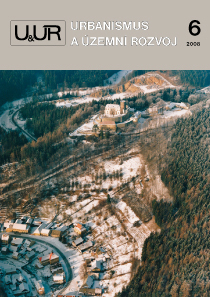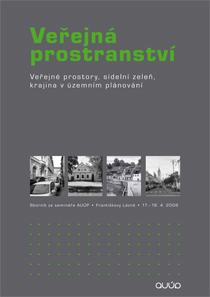

Tools of Brownfield Regeneration in Scotland, by Vlaďka Kirschner
Brownfield areas in Scotland and the Czech Republic are almost equally large, of 10.4 thousand hectares (CzechInvest 2008; SE 2007), thus representing approximately 0.1 % of these countries’ territories. Scotland has recently adopted an active policy of brownfield regeneration, supporting some new regeneration tools which might be inspirational for the Czech Republic too. This article presents the tools designed to restrict the use of greenfields for building, support the selected functional use, cut the impact of contamination, and clarify the ownership relations.
Brownfields: A Look on the Strategies of Location Owners, by Lucie Doleželová & Ondřej Vejvoda
The article describes the results of a research project aimed at the intents of the owners of brownfield locations. The survey was carried out in two Regions of the Czech Republic, following the previously published results of brownfield localization. Based on the response, the authors have identified a typology of owners. For the category of active owners, investment projects were examined in more detail, comparing them within the Regions under observation. With the results generalized for the whole of the national territory, mid-term estimations of the regeneration potential were made.
Typological Subdivision of Landscapes in the Czech Republic, by Jiří Löw & Jaroslav Novák
There is one more basic stimulus for the elaboration of the typological subdivision of our landscape characteristics than just the implementation of the provisions of the European Convention on Landscape: a general need for the unification of the view on the characteristics and variety of the Czech landscape. The purpose of the typological subdivision, as anchored in European contexts, is to make certain typological frameworks for individual subdivisions of landscapes into places and regions of specific landscape patterns. A typologically described territory of the Czech Republic should also contribute to the notion of specific national features within a unified Europe. Such typological subdivision is essential for the definition of local and regional landscape patterns in the documents of physical analysis, to be subsequently interpreted in basic physical planning documents.
Evaluation of the Potential Impact of Wind Park Construction on Territorial Development of Tourism: The Example of the Recreational Area of Slezská Harta, by Bohumil Frantál & Josef Kunc
Wind power plants have become a subject of controversy in the public and among professionals in the Czech Republic. From the viewpoint of physical planning and that of the realisation of related projects, the question of the social acceptance of wind parks is crucial; not only for the residents of affected locations (community acceptance) but also for their representatives at local and regional levels (political acceptance). Today, one of the main arguments against the construction of more wind parks (besides that about the potential impact on landscape character) is the worry about the negative influence upon tourism. The aim of the article is to analyse, evaluate, and empirically verify the potential influence of the construction of wind power plants on tourism, as based on the example of the immediate surroundings of the Slezská Harta dam and the adjacent Recreational Area.